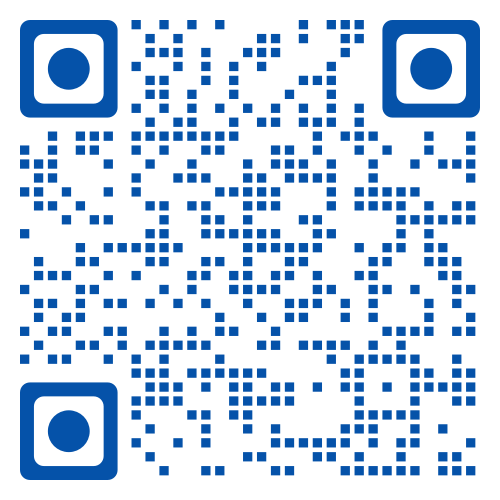Electrocardiogram
(ECG/EKG)
An EKG test is an easy way to get information to diagnose a problem with your heart. It doesn’t take long and doesn’t cause pain, but an electrocardiogram can tell your healthcare provider if you’ve had a heart attack, heart failure or heart damage. It can also tell them if your heart rhythm isn’t normal or how well your pacemaker is working.
Overview
An EKG shows the frequency and duration of your heartbeat.What is an EKG?
An electrocardiogram (EKG or ECG) is a diagnostic tool that records your heart’s electrical activity. Healthcare providers use it for many reasons, like to diagnose heart rhythm issues or to monitor how well a treatment is working.
An EKG is a quick, noninvasive test that doesn’t hurt. You can get an EKG while lying down and resting or while you’re exercising as part of a stress test. Some personal devices, like smartwatches, can take an EKG. But it’s best to have a healthcare provider take and read your EKG.
You may hear the terms EKG and ECG. Both terms mean the same thing: an electrocardiogram. EKG comes from the German word, which uses “k” instead of “c.”
An electrocardiogram is different from an echocardiogram, which is an ultrasound that creates images of your beating heart.
Types of heart rhythm devices
Providers can use different types of EKG devices to monitor your heart’s rhythm depending on how long they want to evaluate it. A typical EKG has to be conducted in a medical facility and only tracks your heart’s electrical activity for a very short time (typically 10 seconds). So, it probably won’t pick up problems that only happen once in a while. It’s like when your internet is acting up but seems fine when someone comes to repair it. Because of this, there are other types of heart rhythm devices that are similar to EKGs, but can provide different information.
Types of EKG devices include:
- Standard 12-lead EKG. You get this type while sitting in a provider’s office. You don’t take the device home with you.
- Short-term, wearable monitor like a Holter monitor. You wear this device for 24 to 48 hours to get a continuous recording of your heart’s electrical activity for that time frame.
- Event monitor. You wear this device for a week or more. You may need to click a button to start recording when you feel symptoms.
- Implanted loop recorder. A provider puts this type under your skin. You may have it for several years.
- Stress test EKG. A provider connects you to an EKG to take readings while you walk on a treadmill.
When is this test performed?
Your healthcare provider may use an EKG test to check for certain conditions. They may use it to diagnose:
- Arrhythmia (abnormal heart rhythm) or abnormal electrical conduction
- Poor blood flow to your heart muscle (ischemia) because of coronary artery disease
- An issue with your heart valves
- Congenital heart disease
- Heart attack
- Enlarged heart chambers
- Heart damage or heart failure
Providers may also use an EKG to make sure you’re fit for an upcoming surgery or check your heart health if you’re at a higher risk of heart disease. They may want to see how your heart is doing since you got a pacemaker or find out how well a new medication for heart disease is working. They may also check your heart’s rhythm after a heart attack.
Your provider may give you an ECG test if you have these symptoms:
- Chest pain
- Shortness of breath
- Tiredness
- Dizziness
- Syncope (fainting)
- Cyanosis (blue hands and feet)
- A flutter or skip in your heartbeat
- A fast heartbeat
- Difficulty with blood supply during physical activity (chronotropic incompetence)
Test Details
How does an ECG test work?
Your own internal pacemaker starts your heartbeat with an electrical signal. An EKG reads that signal and tracks its impact on your heart as it contracts and relaxes with each heartbeat. A computer makes the information about your heartbeats into a wave pattern your healthcare provider can interpret.
A heart expert (cardiologist) usually orders or performs a traditional EKG test. But other providers can give you this test, especially if you’re in an ambulance or an emergency room, or at a scheduled appointment. You can get an EKG in your provider’s office, at a hospital or at an outpatient facility.
How do I prepare for the test?
Before an electrocardiogram, you can eat and drink like you normally would. But before you get dressed on the day of your EKG test, try to:
- Avoid using oily or greasy skin creams and lotions, because they keep electrodes from making good contact with your skin
- Avoid full-length hosiery that prevents electrodes from touching the skin on your legs
- Wear a shirt that you can remove easily to place the leads on your chest
What happens during an EKG?
A healthcare provider will attach 12 electrodes with adhesive pads to the skin on your chest, arms and legs. They’ll put six electrodes or sensors on your chest and six on your limbs. The sensors send information through wires or leads, which is why people call it a 12-lead ECG.
To allow a better connection, your provider may shave hair that’s in the way. It takes about 10 minutes to attach the electrodes and complete the EKG test. But the actual recording takes only 10 seconds.
For a resting EKG test, you‘ll lie flat and relax. If you’re doing a stress test, you’ll walk on a treadmill during the test.
A computer creates a picture (on graph paper or a screen) of the electrical impulses traveling through your heart. You won’t feel anything different when the electrodes communicate with the computer.
The electrodes will stay on your skin until the EKG test is done.
What to expect after an EKG
Your healthcare provider will remove all of the sticky electrode patches and you can return to your normal activities.
What does an EKG show?
When they read an EKG, your healthcare provider will look at how much electrical activity there is and how strong it is. They’ll also look at how much time passes between the different waves or peaks that represent the electrical impulses.
The parts of an electrocardiogram and what they represent are:
- Your upper heart chambers (atria), where your heartbeats start, create the first wave, or “P wave.”
- Your lower heart chambers (ventricles) create the next wave, called a QRS complex.
- The third wave, or “T wave,” shows your heart at rest or recovering after beating.
What are the risks of this test?
An electrocardiogram is a low-risk test. It doesn’t use radiation or put electricity into your skin. You might have some skin irritation after your healthcare provider removes the sticky patches that were attached to the sensors.
Results and Follow-Up
What type of results do you get and what do the results mean?
A normal EKG should show a regular series of waves that repeat. There’s a small bump (P wave), a spike (QRS complex) and then another small bump (T wave). These should happen again and again with the same distance (which represents time) between them. This means your heart rate is regular and its rhythm is normal.
Unusual wave patterns can mean there’s a problem. Abnormal ECG results can help a provider know which part of your heart has an issue. The process of making your heart beat is a complex one that involves many parts of your heart.
When should I know the results of the test?
If your healthcare provider can review your EKG test results right away, they may speak to you soon afterward. This is especially true when you need treatment right away. But if your electrocardiogram test is more routine or part of a group of tests before noncardiac surgery, you may not hear from your provider for a few days.
Your provider will keep your EKG records on file to compare with future ones.
If the results are abnormal, what are the next steps?
The next steps depend on the reason a provider performs an EKG. If it shows that a pacemaker isn’t working well, they may need to adjust its settings. If the results suggest a certain diagnosis, a provider may do other tests to confirm the diagnosis. If the results allow a provider to diagnose you with a heart condition, they can treat it with medication, a procedure or surgery.
When should I call my doctor?
Contact your healthcare provider if:
- It’s been several days since your electrocardiogram test, and you haven’t heard from them
- Your symptoms are worse than they were before your EKG test
- You have questions about the next steps after your provider makes a diagnosis
Find me on Social Media
 |
Don't forget to bookmark my site to see updates..
Copyright © 2000 - 2025 K.
Kerr
|






